The Spanjaard family from Borne, Twente, Overijssel
Source: “Verweven met Twente, de Joodse fabrikantenfamilie Spanjaard” by Marianka Spanjaard and Paul Denekamp
Publisher:-Walburg Pers
- ISBN-10:9057307340
- ISBN-13:978-9057307348
Introduction
The village of Borne in the province of Overijssel is located between the cities of Hengelo and Almelo. It is one of the oldest places in the Twente region of eastern Netherlands; its first historical mention was in 1206.
The Spanjaard family came originally from the Remagen region on the Rhine, about 50 kilometer south of Cologne. Salomon Jacob was born on 13 December 1783 in Bodendorf, five kilometers further south. Going by the order in which Salomon named his children, his parents were probably Jacob Nathan and Dorothea Simons.
The Spanjaard family
The family’s history begins on 2 March 1812, when Salomon Jacobs, a Jewish resident of Borne, adopted the name Spanjaard. Napoleonic law, which applied to the Netherlands also as it was then part of the French Empire, had made the adoption of surnames compulsory in 1811. Salomon called himself Salomon Jacob when he went to Borne town hall with Sara David on 27 March 1811 to request permission to have their marriage banns published. The actual wedding took place two weeks later, on April 10th. Sara was the eldest daughter of David Benjamin and Berendina Menko.
When Salomon registered the birth of his son Jacob in 1813, he still used the name Jacobs and named his wife Sara David. He was mostly called “Sallie Eenoog” (Sallie One-eye), as his left eye was askew.
Not much is known about Salomon before he arrived in Borne. He probably came to the Netherlands in 1802 and settled in Zwolle, the province’s capital, when he was eighteen. He started trading in textiles, travelling in the area. There is however no record of him in the Zwolle archives. According to some sources he traded in second-hand clothes, fabrics, copper, and anything which would make him some money. He was very likely a pedlar who spoke Yiddish but gradually acquired the Dutch language.
It is not clear when exactly he settled in Borne. A Salomon is mentioned in the Borne and Hengelo tax offices in 1802, but the first evidence that he resided in Borne was not until 1805. He was offered hospitality by the Jewish Van Gelder family, probably the parental home of his future wife, where he used to interrupt his journey when he was a travelling salesman. There were few other Jewish families in Borne, and they were all as poor as the other inhabitants.
Jews were first mentioned in Borne round 1750. They lived together in the Bornse Veld, an area outside the village. Around 1775 the small Jewish community acquired its own cemetery. Synagogue services were held in a ramshackle timbered house.
For the family’s history the ancestors of his wife’s family are also important. They had adopted the name Van Gelder in 1812, probably as they came from the neighbouring province of Gelderland.
Explanations vary why Salomon adopted the surname Spanjaard in 1812. It may have been because the local farmers called him “the Spaniard” for his dark looks. He may also have been a descendant of a Jewish delegation from Frankfort which went to Spain in the 16th century to ask Charles Vth for privileges. Or he may have had Spanish ancestry. There were many other families with the same surname, some 500, of whom only 32 were descendants of Salomon Spanjaard and Sara van Gelder. Many Spanjaards lived in Kennemerland, a coastal region in north-western Netherlands. In 2007 the 50 members of the Spanjaard family residing in Twente, made the largest number.
In 1813 Jewish residents in Borne were registered to determine the amount of tax that should be paid to the synagogue. Its Jewish community belonged to the ‘ring’ synagogue in the nearby town of Goor. Ring synagogues were ranked directly below their province’s main synagogue. Changes introduced during the reign of King William I, after French rule, meant that education became state-supervised, and that Yiddish was discouraged in Jewish schools and services. In 1843 a new synagogue was inaugurated in Borne and Salomon Spanjaard was appointed warden. Services had previously been held in the home of the Van Gelder family, a so-called huissynagoge. Salomon had been responsible for the design of the new synagogue, and the implementation was partly determined by the Jewish members of the community and Protestant farmers.
Business expansion
Salomon Spanjaard left the Bornse Veld in 1814 and bought a property in the centre of the old village near the Oude Kerk (Old Church) in what is now the Brinkstraat, but was then called Jodenstraat (Jews’ street). His financial situation enabled him to buy the house for 220 guilders. In addition he had to pay an annual charge of three hens to the landowners.
From this simple home Salomon expanded his business. He was still a travelling pedlar, but had extended his range. He set up a shop in their house which was run by Sara. The most important factor in achieving economic growth was however the fact that he became a fabrikeur. A fabrikeur provided independent home workers with raw materials or semi-finished products which they wove at piece rate for him to sell on again. Throughout this process he retained ownership of the raw materials, the half-products and the end products. The main difference between a factory owner and a fabrikeur was that a factory owner had members of staff in his employ. The Spanjaards continued working this way until 1860 when factory production took over.
Salomon installed a number of weavers in the shed by his house in 1828, a first step towards factory production. The weavers welcomed this as it was a way for them to combat poverty. He imported cotton yarn from England to begin with, but serious transport problems forced him to use the cotton mill in the nearby city of Enschede to ensure a regular supply. He also paid eight spinners from Borne and one spinner from Hengelo to spin yarns for him. Salomon instructed the weavers how and what to weave, and checked the material before it was partially bleached or dyed.
In 1828 the mayor issued Salomon with a licence as “shopkeeper, merchant, manufacturer, and pedlar without a pack”. Salomon made regular business trips, even to Amsterdam, which his son Jacob undertook later on. The commercial contacts of the Spanjaards ranged across the entire country. In 1857 nearly 65% of the firm’s turnover came from the western provinces of Noord-Holland and Zuid-Holland. Many of his customers were Jewish. Salomon’s correspondence showed him to be a reliable and reasonable salesman.
The letter copy books and sales books which have been preserved from 1833 onward, show that Salomon not only traded in second-hand clothing and rags, but also in products which had become more important like flour, prunes, raisins, coffee, nutmeg, rice and nuts. He also sold small barrels of gin, feathers, old copper, tea kettles, animal hides, flowery wallpaper and whale oil. His turnover in textile products such as cotton and linen yarns, and all kinds of fabrics was considerable. Around 1850 he dealt exclusively in textiles, probably because his son Nathan had taken over the grocery shop. His main concern remained textiles however, with cotton becoming increasingly more important than linen. In 1852 Salomon handed the business over to his sons Jacob and Levie.
The family
Salomon and Sara’s had fifteen children. Their first child, Simon, died when he was four days old. Their son Jacob, who was born one and a half years later, joined his father’s business when he was old enough. In 1837 he married his second cousin Rozina Zwartz with whom he had four sons. She died in 1846 giving birth to their first daughter Rozina. A year later he married Lotte Lehmann, who gave him three sons and two daughters.
Salomon and Sara’s first daughter Berendina (Dientje) was born in 1816. She married Salomon Zwartz in 1834. He was her second cousin and a brother of Jacob’s first wife Rozina. These two marriages strengthened the bond between the two families.
In 1836 Dientje and Salomon’s had a son Nathan, who was Salomon and Sara’s first grandchild. The two families had many descendants, half of whom stayed in Borne, where they traded mainly in textiles. Elsewhere they also traded in jewels and grain.
Development
The Spanjaards became prosperous and influential inhabitants of Borne. Theirs was a family business, and relations with their employees were good. Because of various problems in the Dutch economy and Netherlands’ separation from Belgium, the Dutch Trading Company concentrated mainly on the cotton industry in Twente. The Dutch Trading Company (Nederlandse Handel Maatschappij: NHM) had been set up in 1824 by King William I to promote and develop trade, shipping and agriculture. The inhabitants of Twente were used to weaving and spinning, as agriculture was not particularly profitable. A large number of textile products were exported to the Dutch East Indies via the NHM, but later partly by private enterprise.
The first time Salomon Spanjaard supplied goods to the NHM was in 1848. This had been an important step, as those who kept exporting privately were unable to remain competitive. The year 1850 was considered the beginning of the Dutch textile industry. Salomon sold his firm to his sons Jacob and Levie in 1852 and that same year a trading partnership under the name S.J. Spanjaard was established. The years that followed were prosperous. The Spanjaard family changed to mechanical production in 1860, with steam being the main source of energy. Many yarns had to be imported from England however, for the production was too small and complicated for Twente, where weaving remained the preferred option.
Since the infrastructure was inadequate for the fast transportation of raw materials and end products, the Dutch government ordered canals to be dug. Twente became less isolated as a result and its connection with Germany improved, which helped ensure the supply of coal for the steam engines. When the railway reached Borne, Jacob and Levie decided to build steam spinning and weaving mills, which was technically and financially a complicated affaire. But the Borne factory was now in a favourable location for transport.
The Spanjaard brothers
Jacob had lost his first wife Rozina in 1846 and married Lotte Lehmann a year later. She died in 1896. These two marriages provided Jacob with ten children. He had prospered materially and the family’s financial situation was sound. Jacob was by all accounts an authoritarian, patriarchal man, who was not always easy to get on with but his heart was in the right place. His sister Dientje and her husband Salomon Zwartz lived in Oldenzaal, but the bond between the two families remained close.
Jacob and his brother Levie shared the administrative, financial and commercial management of the firm. Jacob’s two older sons, Izak and David, joined in 1864 and concentrated on the technical side of the business. His younger sons Bernard and Alex joined later. When Jacob retired from the firm in 1889, his nephews Salomon and Albert (sons of Levie) took his place.
Thus the firm remained in the hands of the Spanjaard family. Some family members went in other directions, such as banking or insurance. Towards the end of the nineteenth century the Spanjaards had become the most important family in Borne. But not everyone remained in Borne: some moved to Oldenzaal, Elburg and Amsterdam, while others went abroad, to the United States, Belgium, Germany and France.
As the Spanjaards prospered in Borne, their standard of living rose. They owned large houses, beautiful furniture and their own means of transport, which was unusual in the 19th century. They employed a large number of domestic staff and their lifestyle was lavish by local standards. Salomon and Sara’s life style remained modest however. They stayed in the house where their children had grown up. While the life style of their sons Jacob and Levie was more generous, the directors who followed (Izak, David, Bernard and Alexander) raised theirs considerably. Salomon and Sara’s son Nathan had inherited the parental home and was therefore financially less well off. The Spanjaards’ domestic staff consisted of maids, gardeners, chauffeurs and other employees. Half of them were Jewish and came from Borne, especially the ones employed by Jacob and Levie. For later generations that mattered less.
A family celebration
In April 1861 there was a large celebration in Borne in honour of Salomon Jacob Spanjaard and Sara David’s golden wedding. The village was decorated, and the mayor and councillors joined the festive procession from the couple’s home to the synagogue. The celebration lasted four days, and the children had made a huge effort to make this an unforgettable event for all participants. The preparations for the party were impressive; there was an organising committee, there were masters of ceremony, songs had been written and composed, and a new Torah scroll had been written. Triumphal arches were installed, and the couple’s children with their partners, and their grandchildren were requested to be present the evening before. It was a great occasion. The festivities started in Borne’s small shul which was too small to accommodate everyone. Overijssel’s chief rabbi gave a speech, a choir sang and the men went to the reception room afterwards. During the days that followed the new Torah scroll was presented, in which the last letters were written by the groom and his nine sons and sons-in-law. The bridal couple presented each of the children and grandchildren with portraits of both of them. The daughters received a bracelet with a small portrait of the bridal couple and the children a prayer book with a golden lock.
In the description of the festivities no mention is made of Salomon Jacob Spanjaard making a speech or expressing his thanks. The golden groom was clearly already in poor health, for he died a week after the celebration.
Berith Salom
During the celebration Salomon Cahn from Remagen proposed to establish a foundation to be called “Berith Salom” (Salomon’s covenant). Salomon’s Hebrew name would normally have been “Shlomo” but on his gravestone it reads “Shalom”. The foundation could therefore have been called “Berith Shalom” and also be interpreted as the “Covenant of Peace” (“Shalom” meaning peace). Its purpose would be to give wedding gifts to female descendants of Salomon and Sara Spanjaard and of himself when they concluded a Jewish marriage for the first time. The day after the celebration the foundation was established, and a starting capital of a thousand guilders was collected. The Cahns were probably related to Salomon Spanjaard. The female members of the family pledged to contribute ten guilders to the foundation each year. Over the years there was enough capital to pay not only for wedding gifts but also for other purposes.
The last meeting of Berith Salom took place in 1941, when six members were present. In 1945 there was a joyful reunion with those members who had survived, but which was also tinged with profound sadness for the many victims. Those present were however keen to continue Berith Salom (BS), and in response to an appeal by Karel Spanjaard and Salomon Zwartz forty-two members returned.
During the war years the family archive and the genealogical register had been safely stored at Dr Stomps’ home in Borne. The cash – the entry in the ledger – was also returned. The situation about the stocks and shares was not yet clear.
The first meeting of BS after the war took place in Utrecht. Just as in the past relationships were very stormy. Ever since the foundation of Berith Salom there had been discussions about the statutory relationships with regard to membership. The statutory conditions for membership in 1896 determined that both the descendants and their marriage partners had to be halachically Jewish (article 3), and those who had converted to another religion, would lose their membership or their right to it. This became a problem after the war, when more members found it increasingly difficult to find a Jewish partner. Long discussions followed, but in the end no changes were made. A new association was established, called BSII. BS had 70 members in 1955 and BSII 42. In 1962 BS membership had increased to 107 and that of BSII to 57. Wedding gifts and student loans were granted to members who had requested them as usual. When BS celebrated its centenary, another attempt was made to change article 3, but it failed again. In 1861 it had been the wish of the ancestors that only descendants who were halachically Jewish could be members of BS. Intense discussions followed, and after a year-long conflict BSII was dissolved and everyone changed to Berith Salom.
The fourth generation
In 1901 five of the six directors retired, and the fourth generation of the Spanjaard family took over: Albert, the remaining director, stayed on until 1912, and Izak, David and Bernard were succeeded by their sons Jacob, Isaac and Karel (three cousins). Robert, one of Izak’s sons, was not a director, but a member of the supervisory board. He was a chemist who founded a paint factory in Delft. After Jacob’s death in 1934 the directorship was taken over by Leo, Albert’s son and Levie’s grandson.
The company had been a partnership firm until 1901, when it became a public corporation called NV Stoomspinnerijen en -weverijen v.h. S.J. Spanjaard. Despite this change the closed character of the family firm was maintained. The directorship would consist of three to five directors. Albert left the company after a long period of service. During the First World War he was a member of the Crisis Committee, set up by the government, and of the potato committee where he was in charge of distribution. He was chairman of various employers’ organisations and sat on the board of an educational foundation for the advancement of art and science among Dutch Jewry. In reward for his services he was made Knight in the Order of the Netherlands Lion. He died in December 1945.
While on the board Albert had been responsible for administration and finance. Jacob was in charge of the technical side. Karel managed sales at home and abroad, and was the first in Borne to have a car. Isaac was concerned with weaving and export to England. After 1912 Jacob was the most prominent director. He was the most colourful of the three cousins. His nickname ‘God of Borne’ indicates that he governed village and factory as if it was his kingdom. He was a hard worker who controlled everything. He was not easy to get on with but also assisted employees who were in need. Jacob did not like to see people suffer materially and made great efforts to ease their plight.
Jacob and Olga had four children, of whom the first two died very young. They were followed by a son Johan (Han) and a daughter Nelly. Jacob had the houses of his father Izak and his great-uncle David rebuilt to form one large property which is still known as the ‘White House’. Numerous nephews and nieces spent their summers with Uncle Jaap and Aunt Olly. Borne remained a central meeting place for the Spanjaards until the Second World War.
The period from 1850 to 1901 had been characterised by advancement and growth, but between 1901 and 1940 huge problems arose, such as fierce competition on the European and Asian markets, social conflicts, the consequences of the First World War and considerable shortages in the labour market. The directorship introduced important changes, improvements and renovations: new machines, a new spinning mill, the construction of a water tower, and the relocation of a dye factory. The start of the First World War nearly brought these developments to a halt. There was a shortage of raw materials, food, fuel, building materials and manpower (mobilisation). During the war years the price of American cotton quadrupled, which they tried to counteract by using substitutes.
While efforts were made in many parts of Europe to improve the workers’ living standards, the Spanjaards were not enthusiastic reformers. They acted as many other factory owners did and lived like country noblemen, lording over the village. They spoke the Twente dialect, went hunting and built large country estates, but they also provided cottages for the workers. In 1928 the NV even owned 173 cottages. Behind every cottage was a strip of land for a vegetable garden. A public bath house was built, and education, sport and music were supported by the Spanjaard family.
After the First World War there had been an enormous demand for products. A partial solution was doing overtime. However this created all sorts of problems, such as strikes. Yet the period between 1920 and 1930 was a time of great prosperity for the cotton industry in Twente. The annual profit for the Spanjaard companies was one million guilders. When a global crisis erupted in 1929, it was no easy task to steer the firm through the depression, and there were often clashes between employers and workers. Within the NV management there were difficulties as well. This was partly due to the Jacob’s illness and his death in 1934, which left the firm with a shortage of family members to manage. Until Jacob’s death it had been a family business. To appoint someone from outside was not an option for the members or the supervisory board. Therefore Albert’s son Leo was appointed, their second cousin. From then on Karel concentrated on export and Leo became the new director of sales. The thirties were not devoid of problems, as differences of opinion between the directors affected family life.
Half of the descendants of Salomon and Sara Spanjaard had moved elsewhere: the Zwartz family to Oldenzaal, the Cohens to Elburg and the descendants of Benjamin (their second son) resided in Hoogeveen and Meppel. Not all of them were employed in the textile industry, some were jewellers and others diamond workers. Many female members were intellectually and socially engaged. Ever since women had the right to vote, they participated increasingly in political activities, sometimes with liberal affinities or leaning towards communism. A few remained unmarried. They worked variously as housekeepers, secretaries, singing teachers, actresses and shopkeepers, and were active in Jewish women associations and charitable work.
For the direct descendants of Salomon and Sara Spanjaard it was clear that they were Jewish. As a result of emancipation that changed and mixed marriages were concluded, especially after 1900. Not everyone stuck to the Jewish tradition, keeping only circumcision, marriage and burial ceremonies. In Twente a social division between Jews and non-Jews remained, even though people mixed freely in daily life. A small proportion of Jews converted to Christianity. There were also many non-practising Jews. Secularisation in Judaism was first apparent towards the end of the nineteenth century, but did not show itself until the sixties in Christianity. Some members of the family were also drawn to Zionism.
Art was very important to many of the Spanjaard descendants. There were musicians among them, such as Selma Spanjaard (singer), Martin Spanjaard and Ed Spanjaard (conductors) and David Spanjaard (pianist). David Spanjaard’s was also very involved with literature and painting. Paul Citroen, famous for his drawings and paintings, was also a member of the Spanjaard family. Jacques Citroen (Jacques van Hoven) was an actor, and Netty Spanjaard was a well-known author.
After the rise of Hitler some family members who had settled in Germany, returned to the Netherlands, where life was often not easy for them. After the outbreak of the war Mart Spanjaard and his friend decided to flee to England in a small boat, but they probably drowned. A few family members took flight, others went into hiding and some were deported and did not come back. Of the ones who lived in the Dutch East Indies during the Japanese occupation, only a few survived.
In1941 the directors and supervisory members of the board left the Spanjaard factory. A non-Jewish director was put in charge of the company, who was later succeeded by an administrator. Two Germans bought the shares of the company after that. In 1944 the company was given the name “N.V. Spinnerijen en Weverijen Westland”. On 5 September 1944 false broadcasts that the city of Breda in southern Netherlands had been liberated, caused great confusion among the German occupiers. This day has since been called ‘Dolle Dinsdag’ (Mad Tuesday). The Germans who had taken charge of the firm, fled to Germany as a result, leaving behind a company that had largely been robbed.
After the war
Karel Spanjaard was accepted back as director of N.V. Spanjaard in 1946. In 1950 he left the company. The only relative left on the board was Jan Bosman. He was married to Mary Boasson, Karel’s cousin. There were hardly any members of the Spanjaard family left after the war, but they are of course still represented in the cemetery.
The factory after the war
After the liberation in May 1945 the factory could not start production immediately, as there was no cotton to spin and weave. It was not until July 27th of that year that the first cargo of cotton was festively received, but the factory was still not operating at full capacity. It was not until 1946 that there was sufficient raw material and energy available, but even then it was hard to attract workers. Leo Spanjaard, weakened by his time in hiding, started work again, but died towards the end of 1945. The factory was then mainly run by non-Jewish directors, with only the supervisory Spanjaard members present. They expressed their gratitude for the management during the war. In 1947 the factory started to make a profit after the huge damage inflicted by the Germans. Strong men like Salomon Spanjaard, his son Jacob and Jacob’s grandson had dominated the company, but men such as these were no longer available. Over the years that followed the factory was modernised and trademarks were connected to parts of the production. The factory got into difficulties and was taken over by the Nijverdal-ten Cate company. In 1970 the factory was no more.
What is left of Spanjaard heritage?
The factory complex comprising seven hectares was completely demolished and made way for a housing estate, called ‘Spanjaardshof’ (Spanjaard’s court). Members of the Spanjaard family are however still active in other companies in the Netherlands in very many fields.
The genealogical register
Since Berith Salom was established, a genealogical register has been kept to determine who belonged to the Spanjaard family. It was therefore important that descendants passed on news of births, marriages and deaths to the secretary punctually. From 1861 this became difficult, as so many relatives left in different directions. Straight after the war in 1945 Karel Citroen made a great effort to bring the register up to date. First the “black book” appeared, in which the family was split into branches. The book was very popular and on the occasion of Berith Salom’s 120 years’ existence the “blue book” was printed, in which family members were arranged per generation, with the eighth generation being the latest.
In 1998 a third book was put together by Karel Citroen’s daughter according to yet another system. This time the family was arranged per branch, with parents being followed by their descendants. In contrast to the two previous books professions were no longer included. There were now 4000 names and support was given by means of a computer. The register is kept up to date digitally and can be found online.
|
Surname |
First name(s) |
Date of death |
Place of death |
Gravestone Archives |
|
Spanjaard |
Salomon Jacob |
22-04-1861 |
Borne |
(150)007.jpg |
|
Van Gelder |
Sara David |
20-02-1882 |
Borne |
(105)008.jpg |
|
Spanjaard |
Jacob Salomon |
26-01-1899 |
Borne |
(150)014.jpg |
|
Spanjaard |
Nathan |
26-07-1897 |
Borne |
(150)057.jpg |
|
Spanjaard |
Levie Salomon |
28-07-1892 |
Utrecht |
(150)021.jpg |
|
Zwartz |
Rosina |
18-02-1846 |
Borne |
(150)182.jpg |
|
Lehmann |
(Char)lotte |
18-01-1896 |
Borne |
(150)015.jpg |
|
Spanjaard |
Izak Jacob |
06-05-1912 |
Borne |
(150)069.jpg |
|
Spanjaard |
David Jacob |
15-08-1917 |
Arnhem |
(150)072.jpg |
|
Spanjaard |
Bernard |
12-02-1908 |
Borne |
12-02-1908 |
|
Spanjaard |
Alexander |
21-11-1912 |
Arnhem |
(150)089.jpg |
|
Spanjaard |
(Jacob) Karel |
30-06-1960 |
Borne |
(150)126.jpg |
|
Spanjaard |
Jacob(us) |
15-8-1934 |
Borne |
(150)075b.jpg |
|
Spanjaard |
Izak/Isaac Jacob |
12-02-1944 |
Borne |
(150)081.jpg |
|
Spanjaard |
Olga Sara |
01-11-1967 |
Borne |
(150)075a |
Extracted from source:Yael (Lotje) Ben Lev-de Jong
Reconstruction and translation from Dutch: Sara Kirby-Nieweg
Review:Ben Noach & Annette Evertzen(Borne)
End editing:Sara Kirby-Nieweg & Anthony (Tony) Kirby, Ben Noach
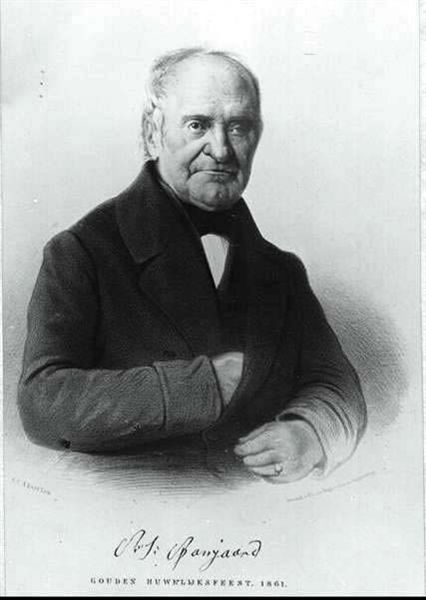 |
| Salomon Spanjaard |
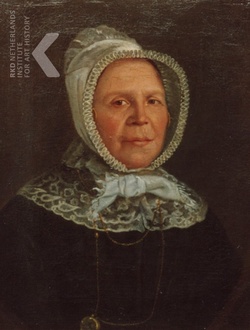 |
| Sara David van Gelder |
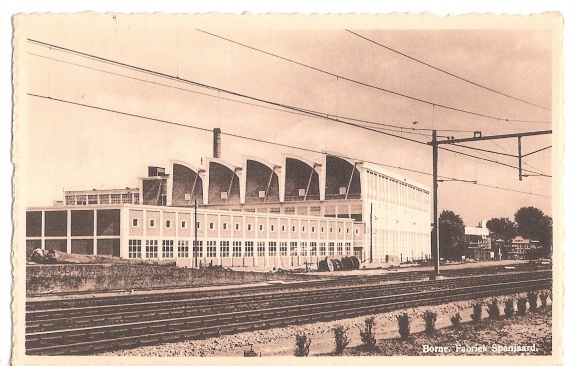 |
| The Spanjaard factory in Borne |
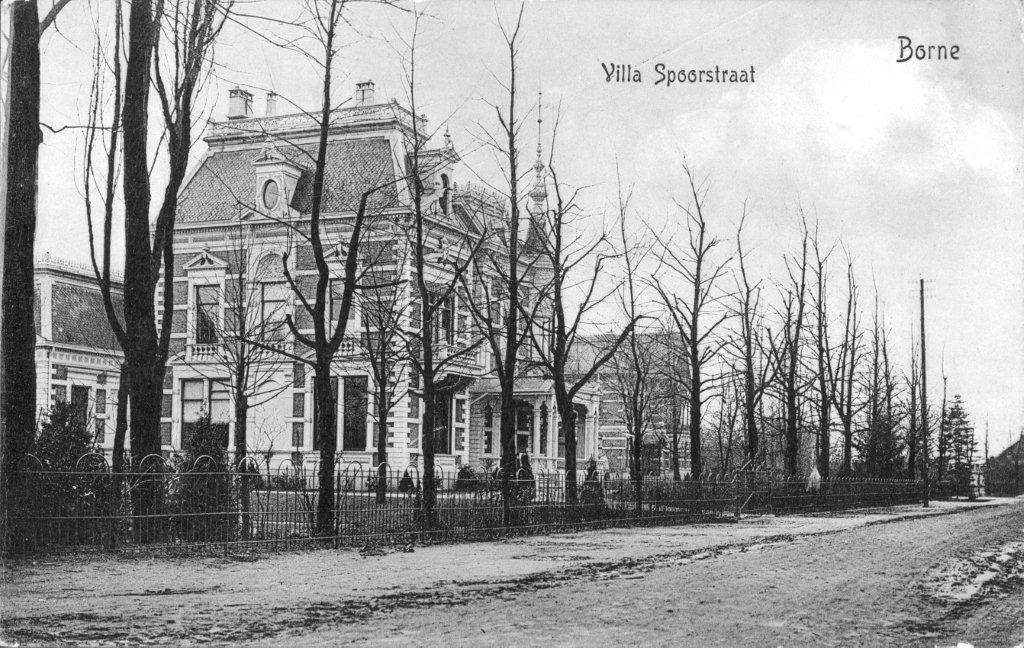 |
| The Spanjaard villa in the Spoorstraat |
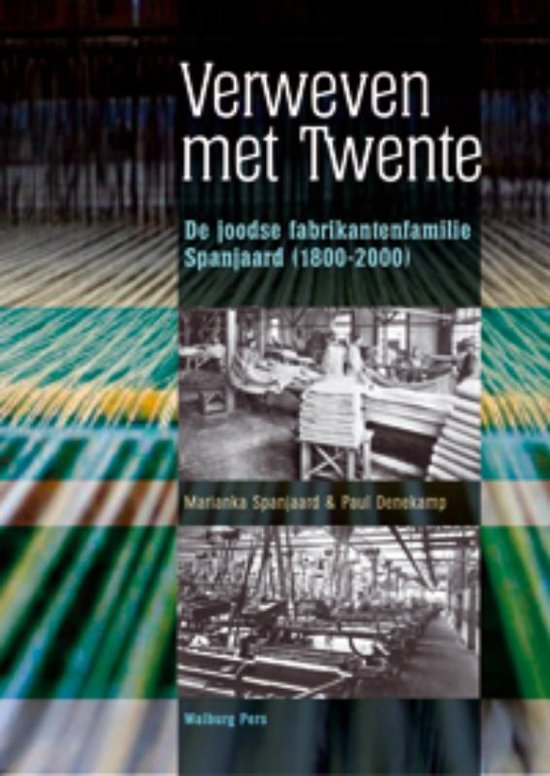 |
| The book "Verweven met Twente" by Marianka Spanjaard and Paul Denekamp |